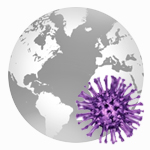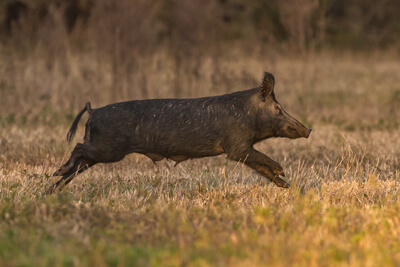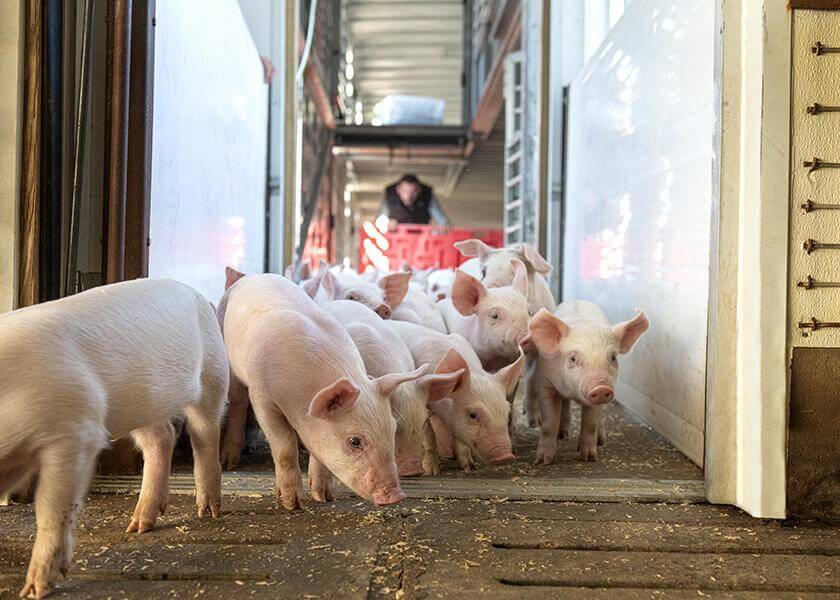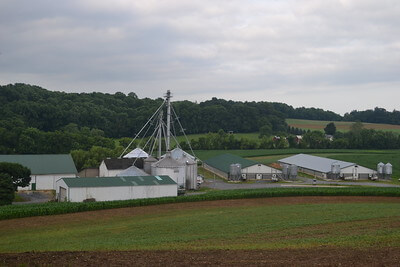
SHIC, launched by the National Pork Board in 2015 solely with Pork Checkoff funding, continues to focus efforts on prevention, preparedness, and response to novel and emerging swine disease for the benefit of US swine health. As a conduit of information and research, SHIC encourages sharing of its publications and research. Forward, reprint, and quote SHIC material freely. SHIC is funded by America’s pork producers to fulfill its mission to protect and enhance the health of the US swine herd. For more information, visit http://www.swinehealth.org or contact Dr. Sundberg at [email protected].

The Swine Health Information Center is requesting broad industry input for the 2023 Plan of Work which will guide activities in the coming year. Input may include topic areas, research priorities, and identified industry needs in which SHIC should focus efforts, such as an emerging swine disease or an emerging swine health issue. Rather than restricting efforts of the Center, the Plan of Work provides a roadmap for the next year but remains flexible, allowing SHIC to react to issues of the industry as they occur in real-time while staying true to the organization’s mission. SHIC’s mission is to protect and enhance the health of the US swine herd through coordinated global disease monitoring, targeted research investments that minimize the impact of future disease threats, and analysis of swine health data.
Suggestions for the 2023 SHIC Plan of Work can be directed to SHIC Executive Director Dr. Paul Sundberg at [email protected] or 515-451-6652 or SHIC Associate Director Dr. Megan Niederwerder at [email protected] or 785-452-8270. Input and ideas are welcomed for the 2023 Plan of Work through December. Additional input and ideas are further welcomed anytime throughout the year to inform newly identified needs which may necessitate adapting or adjusting the Plan of Work.
Being nimble and responsive to realities in the US swine industry reflects SHIC’s mission and illustrates the Center’s strengths. For example, SHIC’s board of directors responded to recent swine health data analysis by shifting both focus and funds to establish the Wean-to-Harvest Biosecurity Program this year. Launched in July 2022, the new program was not specifically included in the 2022 Plan of Work when developed in January but allowed SHIC to respond quickly to an identified industry need and vulnerability. The 2022 Plan of Work, as published in January 2022, can be reviewed here. Information on the Wean-to-Harvest Biosecurity Program can be found here.

In February 2022, an outbreak of Japanese encephalitis in Australia drew the attention of pork producers, veterinarians, animal and public health government officials, and allied industries around the world. In the US, the pork industry began monitoring Australia’s situation and response, ramping up preparedness activities immediately. Some of these efforts were shared during a symposium held in October, hosted by the Center for the Ecology of Infectious Disease at the University of Georgia, sponsored in part by the Swine Health Information Center. All of the JEV symposium recordings have been uploaded onto the JEV symposium website.
JEV Preparedness Efforts in the US
Of those attending virtually or in person, 30 were with USDA-affiliated agencies and Dr. Michael Neafsey, One Health Coordinator for USDA APHIS, was an invited speaker. He said the likelihood of JEV being found in the US is low, however, taken seriously by his agency. If established, substantial human and animal health issues along with significant economic impacts are expected outcomes. As with West Nile virus, eradication would be difficult if not impossible if JEV becomes established. Dr. Neafsey said the most likely mechanism for JEV introduction and establishment of infection would be through infected mosquitoes and expressed concern about delayed recognition of infection in livestock due to the disease’s non-specific presentation.
Dr. Neafsey outlined USDA APHIS Veterinary Services feral swine sample collection programs and pre-existing relationships with local resources as key to JEV surveillance efforts. Veterinary Services staff also have pre-established communications chains.
If suspected, JEV diagnosis will come from virus isolation and molecular tools, according to Dr. Neafsey. This process will include sequencing for detection and differentiation of flaviviruses. The National Animal Health Laboratory Network along with the National Veterinary Services Laboratories in Ames, Iowa, and Plum Island, New York, will be instrumental in detection of JEV, should there be an incursion.
Existing USDA response frameworks include FAD preparedness which Dr. Neafsey said have been used to successfully detect, control, and contain diseases for many years. FAD response plans provide disease specific information and response strategies. Dr. Neafsey said USDA’s JEV disease response strategy is under review and has been removed from the agency’s website as it was outdated.
In conclusion, Dr. Neafsey outlined USDA response goals which are to detect control and contain FAD outbreaks as quickly as possible, eradicate the FAD using strategies that stabilize animal agriculture, the food supply, the economy, and protect public health and the environment. Goals also include providing science and risk-based approaches and systems to facilitate continuity of business for noninfected animals and noncontaminated animal products.
Examining JEV Introduction Risk in the US
Dr. Natalia Cernicchiaro, Kansas State University, presented information on the risk of introduction of JEV in the continental US. She noted that the US shares similar climate and environmental conditions with countries where JEV is epidemic, that the US has competent vectors and hosts, and that there has been increased travel and trade to and from JEV-affected regions. These characteristics, along with the lack of active JEV surveillance in the US, make this region at risk to a JEV incursion.
This risk assessment addressed:
Based on the risk assessment, aircraft and cargo ships were the most likely pathways of JEV introduction via infected adult mosquitoes. The probability of introduction of JEV through infected adult mosquitoes via aircrafts was deemed very high whereas the probability of entry via ships/containers was considered of low to moderate risk. Although the probability of transmission was deemed of variable risk, the probability of JEV establishment in the US is considered negligible. This is due to low availability of amplifying hosts (pigs) and the limited contact rates between infected mosquitoes and hosts in airports and seaports, areas at high risk of introduction of infected vectors.
Presently, Dr. Cernicchiaro and her team are reassessing pathways and noted the need to re-consider vector-free transmission, which has been suggested due to some experimental circumstances. Their work now includes study of the role of domestic and feral pigs and redefining regions of introduction, adding ecosystems and information on distribution and density of commercial and feral pig populations. Their work will be ongoing due to changing conditions including population growth, urbanization, increased animal movement, climate effects, and habitat modification. Changes in their model assumptions will likely lead to changes in introduction probability.
Spatial Interaction Models for US JEV Prediction
Dr John Drake, University of Georgia CEID, Global Infectious Disease Information Consortium, shared a presentation on modeling of JEV spread. He proposed development of a spatial interaction model as a tool for JEV preparedness and response. UGA works on spatial interaction models using data to provide predictions of disease spread with real-time experience including work with the National Institute of Health on Ebola spread in west Africa and COVID spread in 2020 in the US.
Using observations from West Nile virus spread in North America as well as JEV spread in Australia, Dr. Drake and his team discussed the potential value of a spatial interaction model for JEV in the US. The model can provide insight into prioritizing certain locations for rapid detection, some for surveillance, and others for damage mitigation.
Ultimately, the spatial interaction model for JEV in the US would address these questions:
Maintaining Momentum
During a panel discussion among Drs. Neafsey and Drake along with SHIC Executive Director Dr. Paul Sundberg, and Dr. Susan Hills, Division of Vector-Borne Diseases, CDC, the experts agreed maintaining momentum related to JEV preparedness is essential. Their discussion included focus on the One Health aspect of preparedness and surveillance as well as a broad view of potential sites of entry and spread. Diligence, continued education, and development of response protocols were other areas of significance emphasized during their panel discussion.
Other presentations during the symposium addressed vectors in the US including competence of domestic mammalian hosts as well as feral pigs. An upcoming article to conclude the series will feature these two elements.

Feral Pigs in the US
Charles Taylor with the UGA Savannah River Ecology Lab and Warnell School of Forestry and Natural Resources presented information on history, management, and current research on feral pigs in the US during the SHIC-sponsored JEV Symposium held at the University of Georgia Center for the Ecology of Infectious Disease. As vectors, feral swine are competent for over 45 diseases and parasites, a significant concern for any foreign animal disease including JEV, as demonstrated in Australia.
Feral swine are one of most destructive invasive vertebrates in North America, per Taylor, costing $1.5 billion in damage in the US annually affecting agriculture, forestry, and property. Regional management efforts began in the 1990s with a shift in perception and management of feral pigs, Taylor remarked, but did not become aggressively managed on a national scale until the mid 2010s. The National Feral Swine Damage Management Program, launched in 2014, includes research, disease monitoring, tool development, communication/outreach, and control measures. Both lethal and non-lethal management strategies are employed for control.
Today, pockets of feral swine in the US have developed over centuries from genetics mixed with Eurasian boars. A rapid shift in population size and distribution of feral swine ramped up in the 1980s and 1990s. Canada is not immune to the spread of feral pigs with a spike there beginning in the 2000s. Taylor described this recent expansion in the US and Canada as a “pig bomb.”
Wild pigs have been reported in 48 states over time, Rhode Island and Wyoming being the exceptions, with a presence in 35 states now. Current estimates are 7 to 8 million animals are in the US. Recent eradication successes have been seen in Idaho, Maryland, New Jersey, and New York. States nearing or reaching eradication include Iowa, Maine, Minnesota, Wisconsin, Washington, and Colorado. However, entrenched and widespread populations exist in the south and in California.
Numerous management challenges exist for the most abundant and widespread large invasive vertebrate in US. There are few effective predators for feral swine which have the highest reproductive potential of mammals of their size. They can have up to three litters in 14 months with litter sizes ranging from six to 10 and can begin reproducing as young as six months of age.
Taylor said research is needed to advance ecological knowledge and effective management of feral swine. New tools for control are needed as well as best management practices. He and his colleagues continue to study, review, and apply learnings related to wild pig movement and behavior for improved management recommendations. Ongoing projects include the Blackbeard Island elimination project, evaluating different models of estimating abundance, investigating effectiveness of trap types, and exploring diet and changes with seasonality.
Swine Pathogen Horizon Scan
Anna Willoughby, a UGA student working with CEID presented a swine pathogen horizon scan during the JEV Symposium. Her research centered on four questions: Which bacteria should be of concern to the swine industry? What bacteria species will likely infect swine? What wildlife hosts will likely host these bacteria? If a bacteria species is likely to infect, will it have an impact?
In presenting her on-going bacterial spill-over research in mammals, Willoughby said the same approach could be implemented for JEV. It will require revisiting literature to build databases and modeling approaches for all kinds of systems. Success requires knowing details on the life history of the pathogen being examined. Willoughby commented work might be able to pull information from previous West Nile virus outbreaks to apply to JEV work.
Willoughby said 1600 different bacterial species are hosted by mammals and her work focused on 353 North American bacteria species, creating a dataset for development of a spill-over predictive model. Yet there are 176 wild mammals with no bacteria information and 60% of known bacteria species are detected in only one host species. The vast majority of mammals are associated with fewer than five bacteria species. Willoughby said there are 22 mammals in North America with a high propensity for 10 or more bacteria species and the relating 102 bacteria species are not a lab-feasible research priority. She is partnering with SHIC to narrow down the bacteria list relevant to swine via survey of stakeholders. Participation in the first survey round was low so will be repeated for better data.

JEV preparedness activities in the US – entry and establishment risk assessment; research priorities supporting identification, surveillance, and response; and facilitating further information sharing through an ongoing CEID project – are underway after review of the Australian experience that informs the work and process.
Australian retrospective testing shows that JEV was circulating in the country’s swine herds for up to a year before the clinical outbreak. In addition to the symposium, SHIC has already funded an updated, comprehensive entry and establishment risk assessment and a complete literature review to ensure the latest information on JEV genotype IV, the genotype causing the Australian outbreak, is available to help develop surveillance, identification, and research.
A JEV research priority list based on the gaps in knowledge identified, including discussions during the symposium, has been drafted. The wide range of impact on the farms – mild to severe clinical outcomes and short to prolonged clinical disease – means that work needs to be done to understand JEV’s epidemiology and how on-farm and/or regional factors influence the disease transmission and progression.
Additional areas identified for investigation include oral fluids and barn effluent surveillance, and confirming PCR testing would detect all JEV genotypes, including the genotype responsible for the recent Australian outbreak. Further understanding of the economic and trade impacts of a US JEV incursion to pork producers, as well as identifying competent avian and vector hosts for JEV, will be important. Since JEV is a mosquito disease, investigating effective mosquito control measures on swine farms is also included. As part of this process, SHIC is in communication with Australian veterinarians, producers, and researchers to discuss opportunities for JEV collaboration.
Also, SHIC has entered into a memorandum of understanding with CEID to build a JEV Information Sharing Network website to serve as an information clearinghouse for the global pork and scientific communities. The CEID will fill the website with JEV content with an expected launch in late December 2022 and ongoing content additions occurring in early 2023. The site address will be announced in the coming weeks and, per the MoU, the website will be maintained through at least 2023. Content recommendations for the JEV Information Sharing Network website can be directed to CEID Director Dr. John Drake at [email protected].

Work being conducted by Dr. Gustavo Machado and colleagues at North Carolina State University seeks to determine between-farm contact networks formed by different vehicle movements. The team has developed a novel model to reconstruct vehicle movement networks. Ongoing work will identify the vehicles that create more connections among the farms and consequently may play a role as disease super-spreaders in the network.
Using a new methodology, the frequency, ratio of visit, and cumulative time of vehicles visiting farm units and clean stations is being evaluated resulting in risk stratification by farm production type and region. A risk ratio of visits is calculated from of the number times each vehicle visited a farm divided by the number times each vehicle visited a clean station, which facilitates the comparison among these two variables.
Using this new methodology along with other measurement techniques, the overall objectives of the study include determining the average, maximum, and minimum distance of potential disease spread driven by vehicles coming on and off farms. In addition, they are evaluating the impact of cleaning and disinfection effectiveness in reducing the number of between-farm contacts. Their work will help identify likely pathways for disease to spread between farms.
So far, the research team has collected GPS movements from 567 different vehicles from three commercial swine companies from two different regions in the US. Each vehicle was labeled according to its main transportation role. In addition, for 6393 farms used in this study, they collected Secure Pork Supply maps from the biosecurity plans available to identify distance between vehicles and perimeter buffer areas, thus enabling them to define when a vehicle is contacting a farm. They are in the process of creating the network structure to evaluate the connection among farms.
As part of the study objectives, the team is modeling potential spread of African swine fever by creating temporal ranges for the pathogen’s stability and potential introduction into susceptible farms. Using published literature about ASF stability in the environment, the model also evaluates probable vehicle cleaning effectiveness within the vehicle movement network.

The Swine Health Information Center’s Rapid Response Program, an important part of SHIC-supported emerging disease preparedness, offers swine disease outbreak investigations combining biosecurity hazard analysis with outbreak analysis. The program covers the US with six defined regions. Due to the region’s small size, trained Rapid Response Team members from within the region can drive to outbreaks and be on site within 72 hours of invitation by the affected producer.
Rapid Response Teams, volunteer groups of specifically-trained industry experts, quickly carry out Rapid Response Program outbreak investigations, analyzing the patterns and pathways of entry for disease-causing pathogens in affected herds. SHIC trains, maintains, and funds the Teams to provide a coordinated industry disease response that can make anonymized recommendations to prevent infection of other swine units. Those recommendations can be rapidly circulated industry wide. Team members update training regularly and remain ready to respond when the need arises.
When responding to a disease outbreak, Rapid Response Team members will:
The resources used for the Rapid Response Team online training are available for all, regardless of interest in becoming a team member. By registering on the SHIC website, you can access the training modules which serve as an excellent aid for developing your own rapid response protocol.
To learn more about the SHIC Rapid Response Program, or initiate a rapid response investigation, contact SHIC Executive Director Dr. Paul Sundberg ([email protected]) or the program coordinator, Dr. Derald Holtkamp ([email protected]).

SHIC Associate Director Dr. Megan Niederwerder, front left, was interviewed by Hannah Pagel of AgriPulse Communications during the National Association of Farm Broadcaster’s Trade Talk event, part of their annual meeting held in Kansas City in November. In the background, SHIC Executive Director Dr. Paul Sundberg, rear right, is interviewed by KWMT Radio Farm Broadcaster Duane Murley of Fort Dodge, Iowa. Trade Talk presents the opportunity for sharing SHIC’s story with dozens of farm broadcasters from across the country.

This month’s Domestic Swine Disease Monitoring Report brings information about the increased RT-PCR detection of PRRSV in all age categories. Moreover, the number of 1-4-4 L1C variant detections in November 2022 is the highest since its emergence. However, detections are still concentrated in the Midwest, meaning that states east of the Mississippi River continue at high risk of exposure. Influenza A virus substantially increased RT-PCR positive detection in all age categories with a high number of confirmed tissue diagnoses. Also, spikes in confirmed tissue diagnoses of PRRSV, Streptococcus suis, Pasteurella multocida, Actinobacillus suis, and Mycoplasma hyorhinis. In addition, PEDV RT-PCR detection had a sharp increase in the percentage of positive submissions in the last week of November (28th), raising concern regarding the winter season. In the podcast, SDRS hosts talk with Dr. Daniel Boykin, Director of Veterinary Services at Cactus Family Farms, about how to mitigate the co-infection of respiratory pathogens in farms, what is new in PEDV control strategies, and the increased number of Streptococcus suis diagnoses in the field.

Global Disease Monitoring Report highlights include information on a rise in ASF cases in Europe. During November, four countries (Lithuania, Romania, Serbia, and North Macedonia) reported 49 outbreaks in domestic pigs, compared to 28 outbreaks in three countries last month. In wild boars, 861 ASF outbreaks were reported in 14 countries which is three times more than the previous month. ASF strikes again in the Czech Republic where the virus was detected in a wild boar carcass near the border with Poland and Germany. The report also details U.S. Customs and border protection’s new report which says nearly 230,000 pounds of pork-related products were seized at the Los Angeles/Long Beach seaport during the fiscal year 2021. In the UK, Suffolk coastal authorities have seized more than 300 kg of illegal meat imports coming in from European Union countries.
Copyright 2024 | Swinehealth.org | Website by Heartland Marketing Group